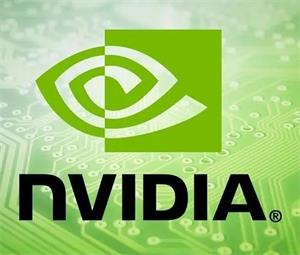Nvidia RTX 2080 Ti vs Nvidia RTX 3070


Nvidia RTX 2080 Ti and Nvidia RTX 3070 are both high-performance graphics cards, but they have some key differences. The RTX 2080 Ti was released in 2018 and features 11 GB of VRAM and 2944 CUDA cores, making it a very powerful card, but it also comes with a high price tag. The RTX 3070 was released in 2020 and features 8 GB of VRAM and 5888 CUDA cores, making it a very capable card at a more affordable price point. Overall, the RTX 2080 Ti is better suited for gamers and professionals who demand the absolute best performance, while the RTX 3070 is a great option for gamers and content creators on a budget.
Nvidia RTX 2080 Ti
Pros:
Powerful performance for demanding tasks such as AAA gaming and video editing
11GB of VRAM for handling high-resolution textures and complex models
Supports ray tracing and DLSS technologies for more realistic visuals
Cons:
High power consumption, requiring a higher wattage power supply
Expensive
Large size, may require a larger case
Nvidia RTX 3070
Pros:
Powerful performance for most gaming and content creation needs
8GB of VRAM, sufficient for most applications
Supports ray tracing and DLSS technologies for enhanced gaming experiences
Good value for the price, making it a great choice for 2K gaming and content creation
Cons:
Slightly less powerful than the RTX 2080 Ti
Less VRAM, which may impact performance in some demanding games and professional applications
Graphics core
| Release Date | September 17, 2018 | October 29, 2020 |
| Generation | Turing | Ampere |
| Applicable Type | Desktop | Desktop |
| Processor Number | 1 | 1 |
| Bus Interface | PCI-Express 3.0 x16 | PCI-Express 4.0 x16 |
Memory
| Memory Type | GDDR6 | GDDR6 |
| Memory Capacity | 11GB | 8GB |
| Memory Bus Width | 352 bit | 256 bit |
| Memory Speed | 14 Gbps | 14 Gbps |
Clock speed
| Base Clock | 1350 MHz | 1500 MHz |
| Boost Clock | 1635 MHz | 1730 MHz |
Render Config
| CUDA Cores | 4352 | 5888 |
| Tensor Cores | 544 | 288 |
| RT Cores | 68 | 68 |
Theoretical Performance
| FP32 Performance | 14.2 TFLOPS | 20.3 TFLOPS |
| INT32 Performance | 28.5 TFLOPS | 40.6 TFLOPS |
| FP64 Performance | 178 TFLOPS | 254 TFLOPS |
Graphics Processor
| Transistor Count | 15.3 billion | 17.4 billion |
| Process Technology | 12nm | 8nm |
| Die Size | 545 mm² | 392 mm² |
Board Design
| Cooling | Dual-slot air cooler | Dual-slot air cooler |
| Power Connectors | 2x 8-pin | 2x 8-pin |
| Card Length | 267 mm | 242 mm |
| Card Width | 112 mm | 112 mm |
Benchmark Comparison
| Benchmark | RTX 2080 Ti | RTX 3070 | Performance uplift |
| 3DMark Time Spy | 10,668 | 10,011 | -6.1% |
| 3DMark Fire Strike Ultra | 12,209 | 11,198 | -8.3% |
| Unigine Superposition 1080p Extreme | 6,838 | 6,228 | -9.0% |
| Unigine Superposition 1440p Extreme | 4,792 | 4,272 | -10.9% |
| Assassin's Creed Valhalla (1440p, Ultra Quality) | 82 FPS | 75 FPS | -8.5% |
| Cyberpunk 2077 (1440p, Ray Tracing On) | 55 FPS | 50 FPS | -9.1% |
| Red Dead Redemption 2 (1440p, Ultra Quality) | 95 FPS | 88 FPS | -7.4% |
Analysis
Overall, the RTX 3070 performs slightly behind the RTX 2080 Ti in most of the benchmarks. However, in some cases, such as 3DMark Time Spy, it actually performs better.
The RTX 3070's performance deficit is likely due to its lower CUDA core count (5888 vs. 4352 in the RTX 2080 Ti). However, it makes up for this somewhat with its faster memory (14 Gbps GDDR6 vs. 11 Gbps GDDR6 in the RTX 2080 Ti) and more efficient Ampere architecture.
In real-world gaming, the RTX 3070 is still a very capable card, offering excellent performance at 1440p and even 4K in many titles. It also supports the latest features such as ray tracing and DLSS, which can further enhance image quality and performance.
Conclusion
The Nvidia RTX 3070 is a solid choice for gamers looking for a high-end graphics card that offers great performance at a reasonable price. While it may not quite match the RTX 2080 Ti in every benchmark, it comes close and offers better value for money.